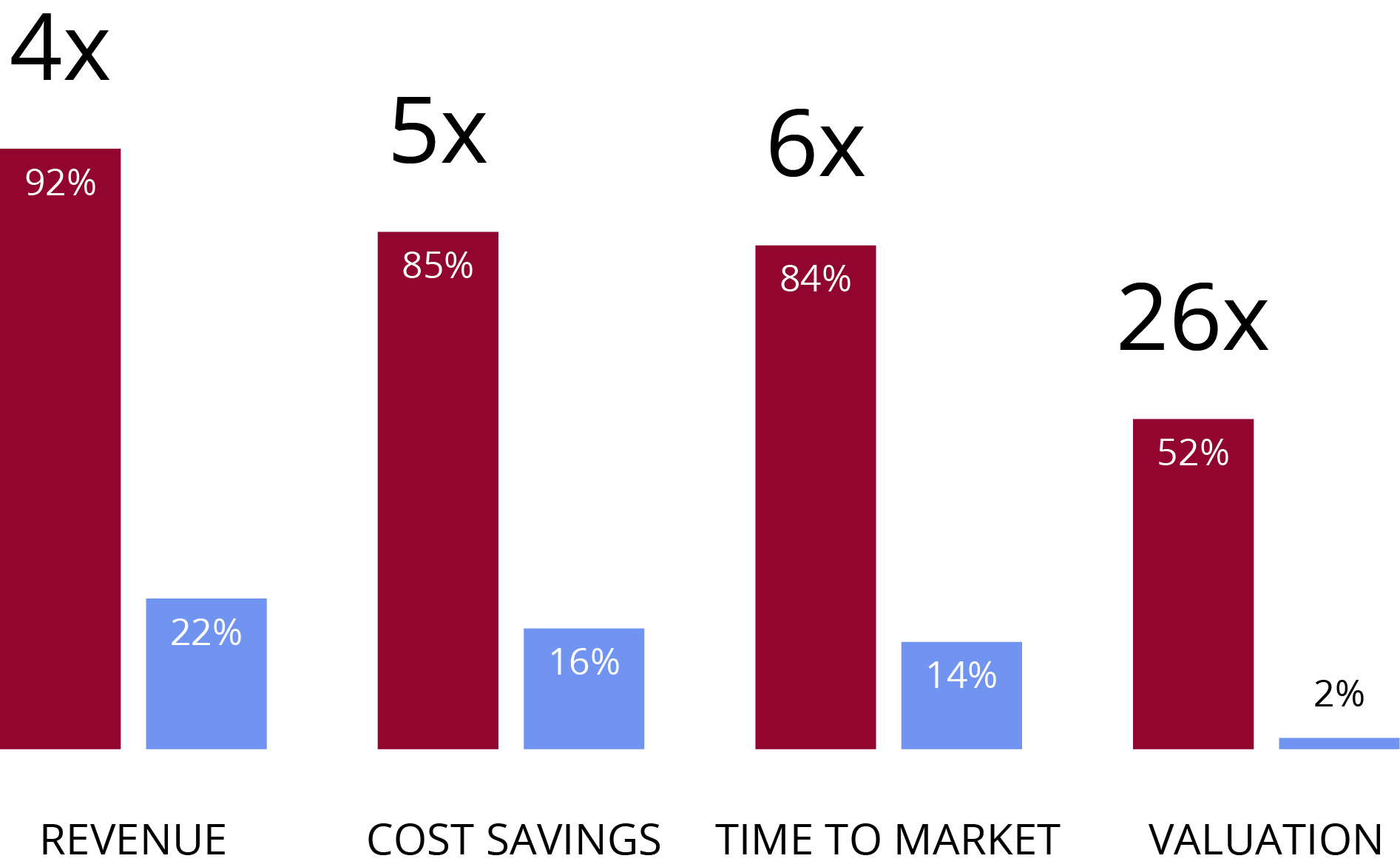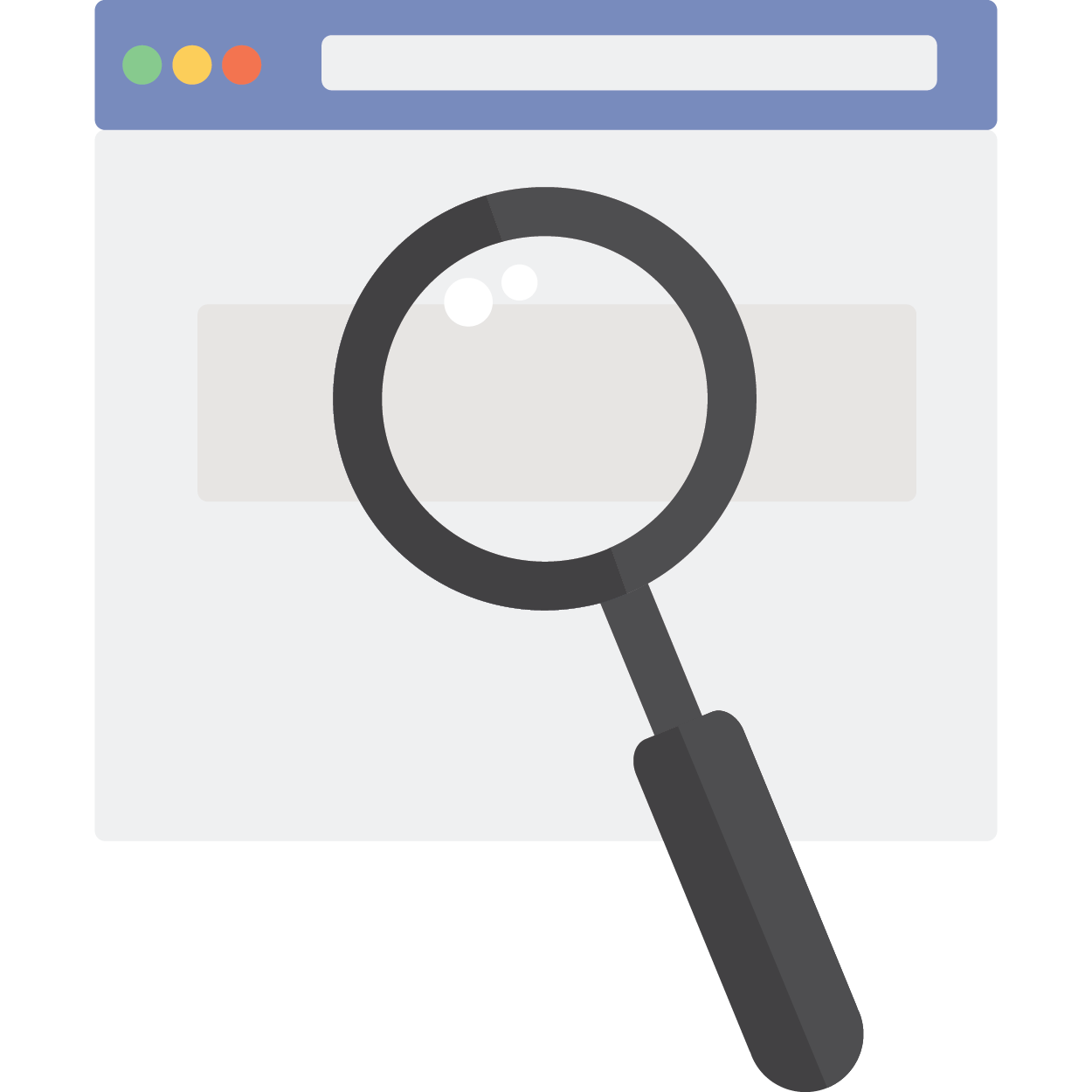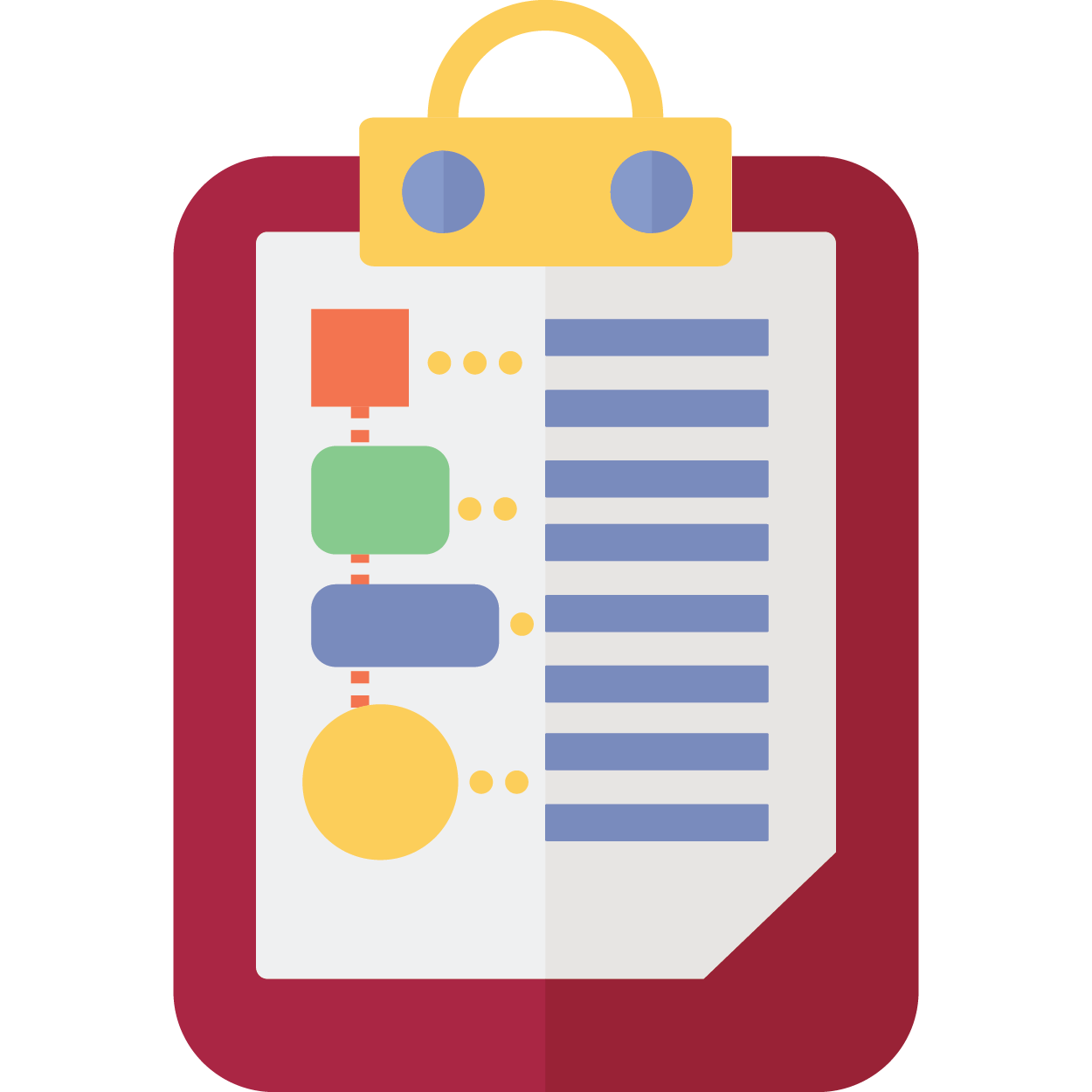
By Varada Iyengar, VP of Digital Product Engineering
Industry Perspective
- Companies with top-quartile McKinsey Design Index scores outperform industry-benchmark growth by as much as two to one.
- According to Forrester, design thinking reduces design, development, and testing time, ultimately reducing time to market by 50%.
The Design Challenge – If You are Not in the Top Quartile
A lack of enterprise focus on Experience Design impacts revenue, customer retention, and efficiency – all key metrics that impact shareholder value. Listed below are some of the key areas that are impacted by the lack of an enterprise Experience Design framework.
Customer Experience – Web Design is Just the Start
Experience design is still bespoke in the majority of enterprises. It is undertaken for individual products or services within a business unit. It is typically staffed and managed by individual product management teams and there are no enterprise design principles, rules, or practices that govern the design system. Visual design of the product and/or service, which is the most critical component of Experience Design, is restricted to deploying critical branding elements that have been designed by marketing; each product team tends to make visual design choices driven by their personal preferences. Over time this leads to a proliferation of colors, typography, icons, illustrations, sound, motion, and space, all of which contribute to cognitive dissonance in the consistency, familiarity, and similarity of experiences across the brand.
One of our financial services clients had 22 unique font families and 46 unique background colors across their customer-facing web and mobile products and services.
Product Design & Product Engineering – A Bridge Too Far
Innovation in Engineering is not slowing down. In fact, with the proliferation of Open Source frameworks and automation of “manual engineering toil”, development is no longer on the critical path to ship products and services. Majority of the backlog in a product is around experience or visual design changes. As backlog grows and applications become more complex, it is common for designers to focus on a discrete part of an app – e.g., Search and Discovery, Account Management, E-commerce, etc.. This not only exacerbates the customer experience problem but adds to the growing chasm between the Design and Engineering teams. Establishing a common and unified design language that the engineering team can implement is more critical than ever to not only improve collaboration and hand-off between Design and Engineering, but drive better User, Designer, and Developer Experiences.
Airbnb is organized into cross-functional teams that bring together engineers, product management, and designers into a single organizational unit – EPD Model
Business Impact of Experience Design
We see business unit leaders, c-suite executives, customer experience leaders, and engineering teams without a way to measure, manage, or justify the investments needed to build world-class design systems and operations. The default approach in most companies is for the product leader to make a business case for a design practice using the traditional ROI model for capital investments. Though there is nothing fundamentally wrong with the ROI model for product investment, it misses the bigger narrative on the impact that an integrated enterprise Design System brings to the customer centricity, product quality, business profitability, and market position of companies.
A select group of companies receive the most value from design for business. Although nearly 80% of companies include design on projects, just 5% are empowering the design team for the greatest benefits, and 41% have significant room to grow – Invision’s New Design Frontier Study
Welcome to the EDGE – Experience Design Gateway Essentials
Based on Paradigm’s 25-year history and experience serving Fortune 500 companies in designing and engineering physical and Digital products and services, our Experience Design practice has built a repeatable and sustainable framework that includes people, process, and technology to accelerate your maturity as a Design Leader and position you in the top 5% in your industry.
Our team is comprised of Digital Experience Design specialists with front-end engineering expertise.

“For any conversation about value to be successful, you need a framework.” – Invision
The Experience Design framework, EDGE, introduced here helps break down complex engineering challenges into practical solutions that are:
- Economically viable (business benefits);
- Technologically feasible (technology fit-for-purpose); and
- Desirable for the user (user experience).
We focus on crafts, methods, and processes that have developed and refined through our years of field experience. There are several operating model details, tools, and design accelerators included in EDGE that require further detail not shared here. Below are some key components included in EDGE.
 EDGE Discovery
EDGE Discovery
EDGE Discovery includes 4-5 weekly sprints for research and planning with the critical customer-facing product and service team to assess current maturity. We introduce automated discovery tools that help identify opportunities to improve catalog and inventory usability and visual design inconsistencies across physical, web, mobile, kiosk, wearables and other platforms. We also assess performance of customer journeys across these various platforms.
The visual design assessment includes study of color, typography, icons, space, motion, sound, and illustrations. We build an inventory of existing UI elements, components, modules, and templates. This particular 2-week sprint provides the baseline for a plan of action for EDGE Definition.
EDGE Definition
EDGE Definition consists of 10-12 weekly sprints to look at UI patterns in each of the customer facing products/services. This includes buttons, widgets, forms, zones, and templates. All of these elements are discovered (some manually, most with an automated tool) inventoried, documented, and made available in a design collaboration platform for commenting, correcting, deprecating, or including in a Future Design System.
At the end of EDGE Definition, we bring into focus the future of your Integrated Design System and DesignOps.
 EDGE Design
EDGE Design
EDGE Design establishes an enterprise playbook for an integrated product, design, and engineering approach to drive the future of your digital organization. During the 3-4 weekly sprints, we work with the Design team to organize all definition work into a cohesive Design Library, including all Digital Assets discovered and defined during the previous phases, as well as a detailed playbook on the design principles that will govern the future of any new product/service rollout, implementation guidelines including an approach and plan to build and adopt a design system, and a DesignOps operating model that will include a cross-functional approach to building Product, Design, and Engineering teams.
 EDGE Delivery
EDGE Delivery
EDGE Delivery ensures we act as sherpas to take you to the top of the mountain where you can join the top quartile (the 5%). We implement an integrated design operating model that serves all key stakeholder needs across the enterprise. Our experience design and engineering resources assist in the implementation and adoption of the design system and establish the governance and metrics program (DesignOps) needed to measure and sustain progress in the enterprise. Our intelligent automation and maturity models help the DesignOps team keep the ascent goals in front as the enterprise undertakes the arduous final ascent to the top 5%.
Expert Design Practice
Experience Design establishes a strong foundation for you to improve the consistency, familiarity, and similarity of customer experiences across your brand and has a significant long-term impact on revenue, customer retention, and enterprise profitability.
Paradigm’s Experience Design practice uses human-centered design thinking to transform your customer and user experience. Our custom EDGE framework leverages human factor engineering practices and research-driven approaches to identify opportunities throughout your customer experience journey to increase user engagement, conversion rates, net promoter score, and cross- and up-sell opportunities.
Have you been grappling with a problem and trying to figure out how to unify your customer experiences across channels to bridge your physical and digital divide? Leave a comment and share your insights. Or, if you would like to hear about how we have helped our clients with our custom framework, drop us a note and we’ll be happy to get on the phone and walk you through some ideas.
